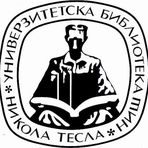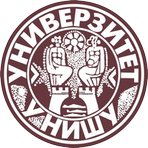Title
Komparativna analiza kliničkih i biomehaničkih parametara hiruškog lečenja trohanternih preloma primenom samodinamizirajućeg unutrašnjeg fiksatora i gama klina
Creator
Mitković, Milan M., 1982-, 35683687
Copyright date
2019
Object Links
Select license
Autorstvo-Nekomercijalno-Bez prerade 3.0 Srbija (CC BY-NC-ND 3.0)
License description
Dozvoljavate samo preuzimanje i distribuciju dela, ako/dok se pravilno naznačava ime autora, bez ikakvih promena dela i bez prava komercijalnog korišćenja dela. Ova licenca je najstroža CC licenca. Osnovni opis Licence: http://creativecommons.org/licenses/by-nc-nd/3.0/rs/deed.sr_LATN. Sadržaj ugovora u celini: http://creativecommons.org/licenses/by-nc-nd/3.0/rs/legalcode.sr-Latn
Language
Serbian
Cobiss-ID
Theses Type
Doktorska disertacija
description
Datum odbrane: 07.02.2020.
Other responsibilities
mentor
Milenković, Saša 1965-
predsednik komisije
Micić, Ivan
član komisije
Manić, Miodrag
član komisije
Ristić, Branko
član komisije
Starčević, Srđan
Academic Expertise
Medicinske nauke
University
Univerzitet u Nišu
Faculty
Medicinski fakultet
Group
Katedra za hirurgiju
Alternative title
Comparative analysis of clinical and biomechanical parameters of surgical treatment of trochanteric fractures using self-dynamisable internal fixator and gamma nail
Publisher
[М. М. Mitković]
Format
148 listova
description
Biografija: list 145;
Bibliografija: listovi 124-140.
description
Orthopaedic Surgery and Traumatology
Abstract (en)
In the clinical part of the study results of trochanteric fractures surgical treatment were analysed in 67 patients treated at the Clinic for Orthopedics and Traumatology of Clinical center Niš, using two different methods of internal fixation: intramedullary gamma nail fixation (Gamma Nail - GN) and extramedullary fixation with Self-dynamisable Internal Fixator with 2 sliding screws (Self-dynamisable Internal Fixator - SIF). Comparison of these two methods was performed in terms of the following clinical parameters: operative time, intraoperative fluoroscopy time, intraoperative and postoperative infusion and transfusion, time of hospitalization, hip function and health-related quality of life at least 2 years after surgery. There were significantly higher values of operative time, intraoperative fluoroscopy time and amount of intraoperative infusion in the GN group compared to the SIF group, suggesting appropriate differences in the number of daily operations planned, in requirement of operating room staff protection from intraoperative x-ray and in planning the required intraoperative infusion. There was no significant difference between SIF group and GN group regarding the other clinical parameters mentioned. There can be concluded that application of GN and application of SIF with 2 sliding screws require the same amount of transfusion and same time of hospital stay, as well as providing the same final clinical result in the treatment of trochanteric fractures. In the laboratory part of the study, the axial forces required to initiate the dynamization of the sliding screws, during the transversal load of these screws, was measured and analysed for GN, SIF with 2 sliding screws and SIF with cannulated sliding screw. Regression parameters of the dependence between the forces required to initiate sliding screws dynamization and the bending moments of their transverse load were calculated afterwards. Increasing of force required to initiate dynamisation by increase of the bending moment was found to be highest for SIF with 2 sliding screws, then for gamma wedges, and the lowest was for SIF with a cannulated sliding screw. Regarding laboratory results, there can be concluded that, in the moment of weight bearing on the operated leg, the initiation of sliding screw dynamisation will not be realized in patients with higher values of body weight or femoral neck length. Thus, it is recommended to perform frequent movements in the operated hip without full weight bearing at the first postoperative rehabilitation time in these patients.
Authors Key words
trohanterni prelom, unutrašnja fiksacija, dinamizacija
Authors Key words
trochanteric fracture, internal fixation, dynamisation
Classification
616.718.4-001.5-089(043.3)
Subject
B600
Type
Tekst
Abstract (en)
In the clinical part of the study results of trochanteric fractures surgical treatment were analysed in 67 patients treated at the Clinic for Orthopedics and Traumatology of Clinical center Niš, using two different methods of internal fixation: intramedullary gamma nail fixation (Gamma Nail - GN) and extramedullary fixation with Self-dynamisable Internal Fixator with 2 sliding screws (Self-dynamisable Internal Fixator - SIF). Comparison of these two methods was performed in terms of the following clinical parameters: operative time, intraoperative fluoroscopy time, intraoperative and postoperative infusion and transfusion, time of hospitalization, hip function and health-related quality of life at least 2 years after surgery. There were significantly higher values of operative time, intraoperative fluoroscopy time and amount of intraoperative infusion in the GN group compared to the SIF group, suggesting appropriate differences in the number of daily operations planned, in requirement of operating room staff protection from intraoperative x-ray and in planning the required intraoperative infusion. There was no significant difference between SIF group and GN group regarding the other clinical parameters mentioned. There can be concluded that application of GN and application of SIF with 2 sliding screws require the same amount of transfusion and same time of hospital stay, as well as providing the same final clinical result in the treatment of trochanteric fractures. In the laboratory part of the study, the axial forces required to initiate the dynamization of the sliding screws, during the transversal load of these screws, was measured and analysed for GN, SIF with 2 sliding screws and SIF with cannulated sliding screw. Regression parameters of the dependence between the forces required to initiate sliding screws dynamization and the bending moments of their transverse load were calculated afterwards. Increasing of force required to initiate dynamisation by increase of the bending moment was found to be highest for SIF with 2 sliding screws, then for gamma wedges, and the lowest was for SIF with a cannulated sliding screw. Regarding laboratory results, there can be concluded that, in the moment of weight bearing on the operated leg, the initiation of sliding screw dynamisation will not be realized in patients with higher values of body weight or femoral neck length. Thus, it is recommended to perform frequent movements in the operated hip without full weight bearing at the first postoperative rehabilitation time in these patients.
“Data exchange” service offers individual users metadata transfer in several different formats. Citation formats are offered for transfers in texts as for the transfer into internet pages. Citation formats include permanent links that guarantee access to cited sources. For use are commonly structured metadata schemes : Dublin Core xml and ETUB-MS xml, local adaptation of international ETD-MS scheme intended for use in academic documents.


